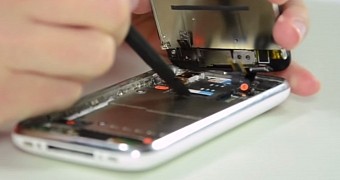Big issues like iPhone 4's Antennagate or smaller issues like a non-responsive screen can awfully ruin the users' experience. Apple prides itself in delivering a higher or better product so the iPhone cannot be anything lower than expected.
A story by businessweek reveals some of the struggles the Apple engineers go through when the phone launches. Any report about a defective product can be tracked to the supplier or manufacturer employee who assembled it.
Apple is well-known for detail-oriented solutions when it comes to testing their products. When antennagate broke, tech bloggers and journalists were invited in one of the rooms where they test signal strength and interference on the phone. However, a device is not fully tested until it shows up in stores and people around the world take it everywhere. Real-world use conditions may bring up issues the engineers have never thought of.
The Businessweek story explains how all the defective phones that go to the Genius Bar are sent back to Cupertino, California. This program was created long before the iPhone and it is called "Early Field Failure Analysis (EFFA)". The main idea is to have issues resolved and dealt with in the back room of a retail store before the problems show up on tech blogs and traditional media.
Fixing a problem on the spot is not always the case. Sometimes they have to go all the way back to the supply chain to work on a defective part or send the software teams back to the drawing board. See the initial Maps issues.
After the broken iPhone is thoroughly investigated in the Apple Store it has to go back to Cupertino as soon as possible, The serial number on each device tracks back to the employee who assembled the parts.
A good example of these strict rules is given from 2007. When the original iPhone was released, a batch with faulty screens returned to the store. It appears that some suppliers have made the earpiece non-air tight and because of that, sweat from a persons face would leak into the screen and it would short it. The EFFA team reacted quickly and spotted the supplier. An extra layer of shield added to the earpiece was enough to fix the problem for future devices.
Another great story also happened with the original iPhone. Another lot has faulty speakers and the problem was caused by the lack of airflow that caused the speakers to buildup pressure while in the plane cargo from China to USA. The pressure was so high that some of the speakers were imploding during the flight. A small whole poked into the speaker was the solution for this problem and Apple had it fixed in no time.

 14 DAY TRIAL //
14 DAY TRIAL //